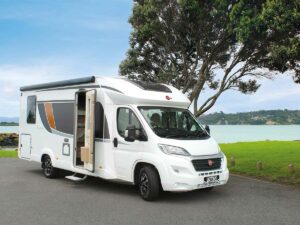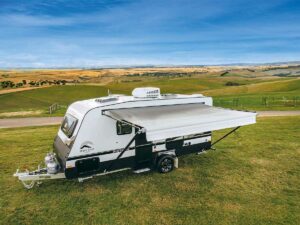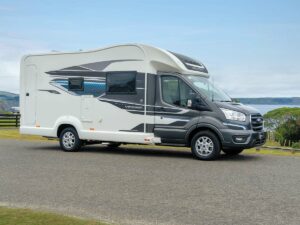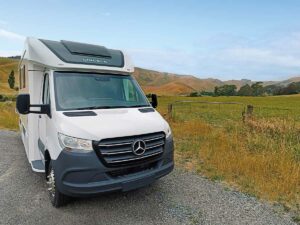MCD writer and RV expert Paul Owen knows more about recreational vehicles than most. He explains why he put his money where his mouth is with the Volkswagen Grand California 600.
When anyone asks me why I bought a Volkswagen Grand California 600, my mind immediately focuses on the travails of driving from Coromandel township to Kennedy Bay. The horrors of driving this rugged, steep, narrow, and winding road that links the western side of the peninsula with the east will be etched into the memories of anyone who has attempted to traverse it in a large motorhome. With some dear friends living the dream at Tuateawa, north of Kennedy Bay, my wife, Joy, and I often clenched our teeth as we regularly rattled, banged and bumped our way towards them in our former 7.4 metre, six-berth motorhome.
And so began our search for something more structurally sound, with a smaller footprint in terms of wheelbase and width, and all-wheel-drive if possible. This wishlist narrowed our focus to just two motorhomes on the market: the NZ-made Explorer Navigator with its one-piece motorhome body married to a single cab Ford Ranger ute, and the VW Grand California, made in the Polish factory that supplies all Crafter vans to the world and comes with everything covered by a five-year warranty. That there would be a two-year wait for our ordered Navigator to finally emerge from the small artisan Explorer Motorhomes factory north of Auckland made the decision easier to opt for the more common and readily available Volkswagen, along with the nationwide dealer network that supports it.
The next decision was, which Grand California model, the 600 or the 680? The length is the major difference between the two, and the numbers tell that story: the 600 is six metres long, while the 680 is 6.8m. But bigger is better, right? Certainly, in terms of visual appeal, storage space, and bed length, the 680 lords it over its shorter sibling. If you’re over 1.9m tall, there’s no way the east/west-mounted main bed of the 600 is going to fit, making the longitudinal bed of the 680 the only option. However, I’m 1.76m tall and Joy measures 1.55m, giving us the choice of either models. We went for the 600, as it offers several hard-to-pass benefits, extra roof height and higher maximum payload, permitting a second pull-down bed to be included as standard. It also was a better fit for our plan of trading our former behemoth for something more parking-friendly and agile.
There’s also quite a price saving to be enjoyed by selecting the baby Grand, the 600 listing for $163,000 compared to the $167,000 asked for the 680. An extra bed and the ability to carry heavier loads for four grand less? Bargain. Who cares that it looks like a Beluga? Sign us up.
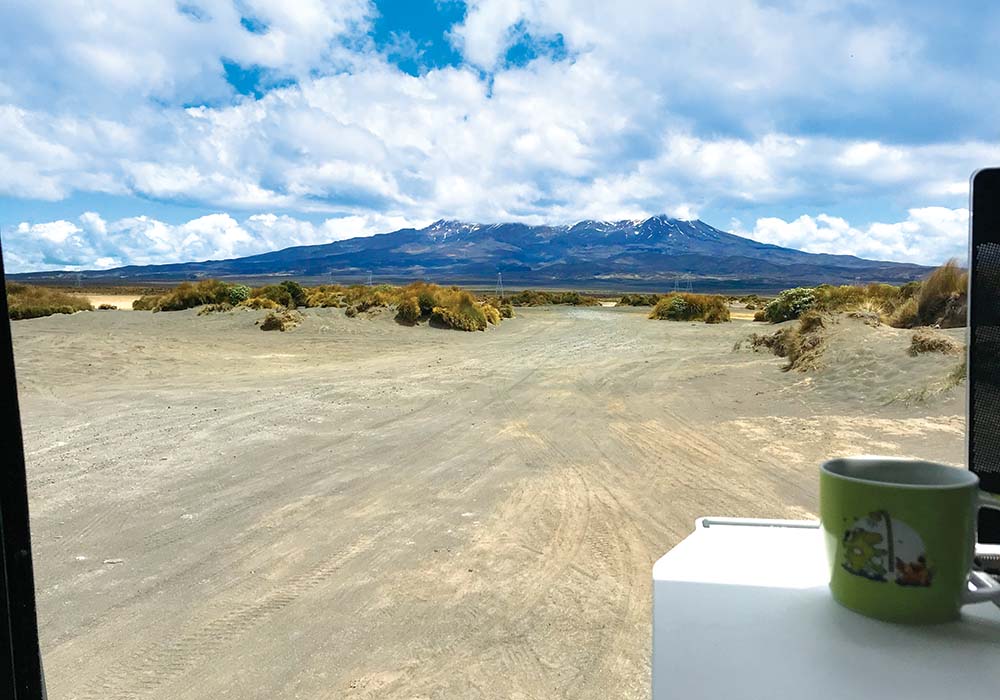
The Acid Test
Soon, we were on our way to Tuateawa again, wondering whether the usual fear and loathing of the road to Kennedy Bay would reappear. Approaching this mental Waterloo, the GC 600 displayed plenty of refinement and imparted a very car-like driving experience. On smooth bitumen surfaces, only well-hushed wind noise levels accompanied our progress. When these turned to coarse chip-surfaced tarmac, the Continental ContiVan Contact 200 tyres began to thrum along too. Of the usual squeaks and rattles associated with motorhome touring there was absolutely no sign on sealed roads. The noise-suppressing benefits of a second floor, the smooth GC roof line with its aerodynamic vents and flush-fit solar panel, and plenty of insulation were making themselves known.
The bogey road was in the worst condition ever encountered when we began the climb. Christmas holiday traffic and heavy trucks had really ripped it up. The corrugations came at us like the forceful ripples of an earthquake, while deep potholes possibly gave the Volkswagen GC a harsher suspension test than any that its chassis engineers had conceived. Yet it performed well enough for something full of cabinetry and all the trappings of the mobile lifestyle. The near-silent passage of the Grand California over smooth surfaces was gone, yet there was no longer the loud cacophony of sounds signalling a motorhome body structure experiencing distress, as there had been during our previous battles with the Kennedy Bay road. The VW passed the crucial test, although I suspect the custom Australian suspension of the Explorer Navigator would have soaked up the bigger hits more decorously.
As the road smoothed out a bit between Kennedy Bay and Tuateawa, I really began to enjoy driving the 600. Volkswagen’s 4motion system in Grand California format only sends engine torque to the rear wheels when the front tyres begin to lose their purchase on the road, and I began to exploit the way the occasional delivery of drive from the rear tyres tightened up my cornering lines. With 130 kW of power and 410 Nm of driving force delivered through a highly intelligent eight-speed automatic gearbox, the 2.0 litre turbo-diesel engine has enough grunt to make the 3000+kg GC feel quite lively and frisky by normal motorhome standards. It’s quite the ‘sports car’ of the NZMCA rally car park. The shorter wheelbase of the 600, compared to both the 680 and our trade-in vehicle, only amplifies that impression.
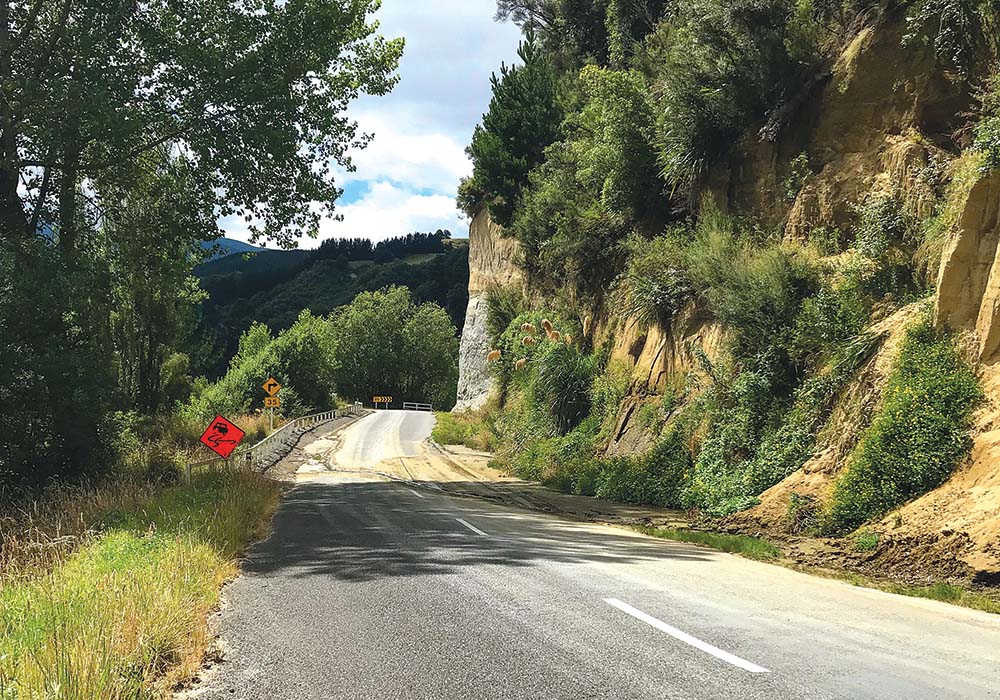
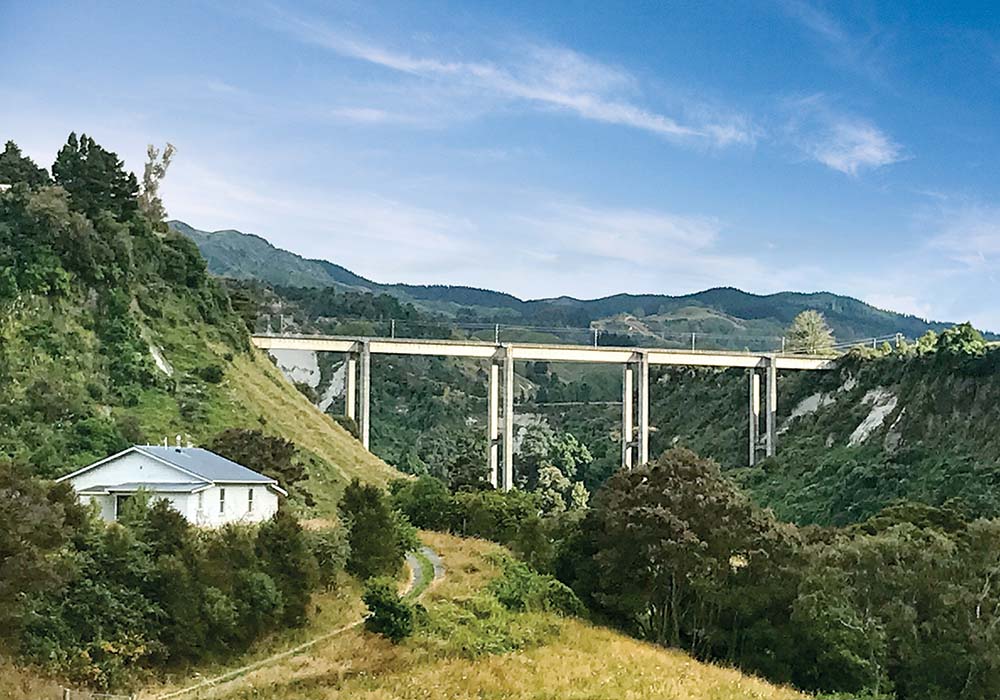
Parking up
Shorter wheelbases don’t just improve vehicle dynamics, they also increase parking opportunities. Before reaching Tuateawa, we parked up the previous night on the front lawn of the house of our youngest son in Pokeno. Here we found his lawn had a perfectly GC 600-sized flat area, whereas our former six-berth had to park out on the sloping road on rear wheel ramps that only cured its tilt rearwards a little.
This parking friendliness is appreciated every time the 600 comes to a stop. In shopping areas, the smaller Grand fits into parking spaces designed for the average passenger car rather than for a fully equipped, self-contained motorhome. Getting out of these, or backing down our friends’ rollercoaster driveway at Tuateawa is an absolute doddle thanks to the wealth of proximity sensors, wide dual-lens mirrors, and the generous view and large display of the reversing camera. There’s also a rear cross traffic alert system should someone or something cut across the back of the Grand California while it’s reversing.
The RCTA system is just one of the many driving aids fitted to Grand Californias; others include blind-spot monitors and warning lights on the side mirrors, radar-enhanced cruise control, and the one I’ve learned to appreciate: the lane-keeping assist, which not only will wake you up should you get distracted, but also also helps keeps the 3m high vehicle stable in strong wind gusts. We’d find the latter’s true worth later in our journey while driving along the wind-blasted plains of the Manawatū and Horowhenua districts.
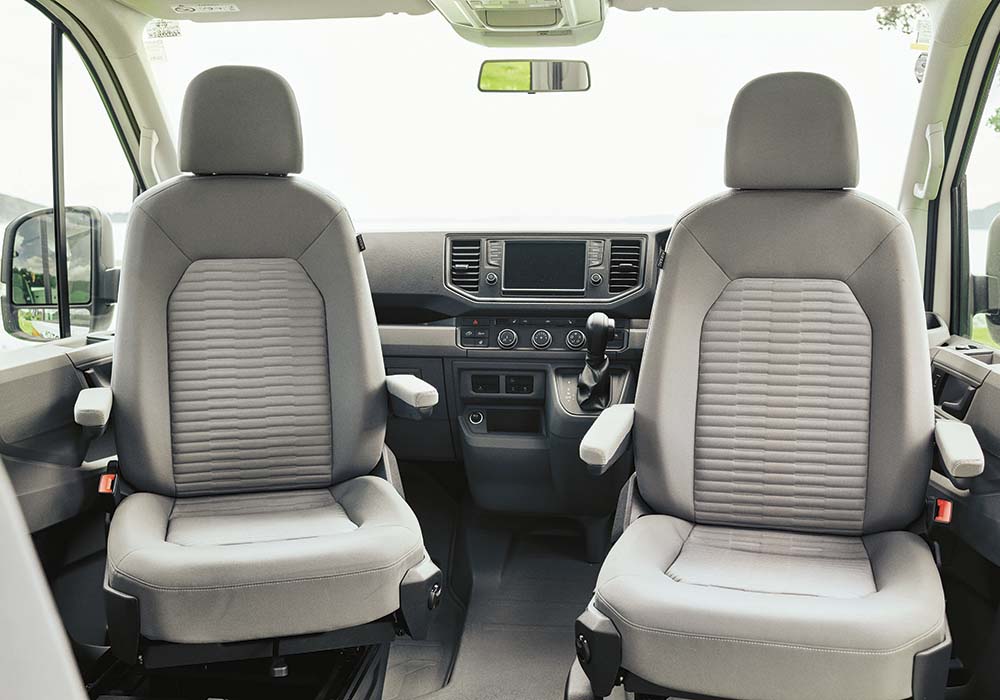
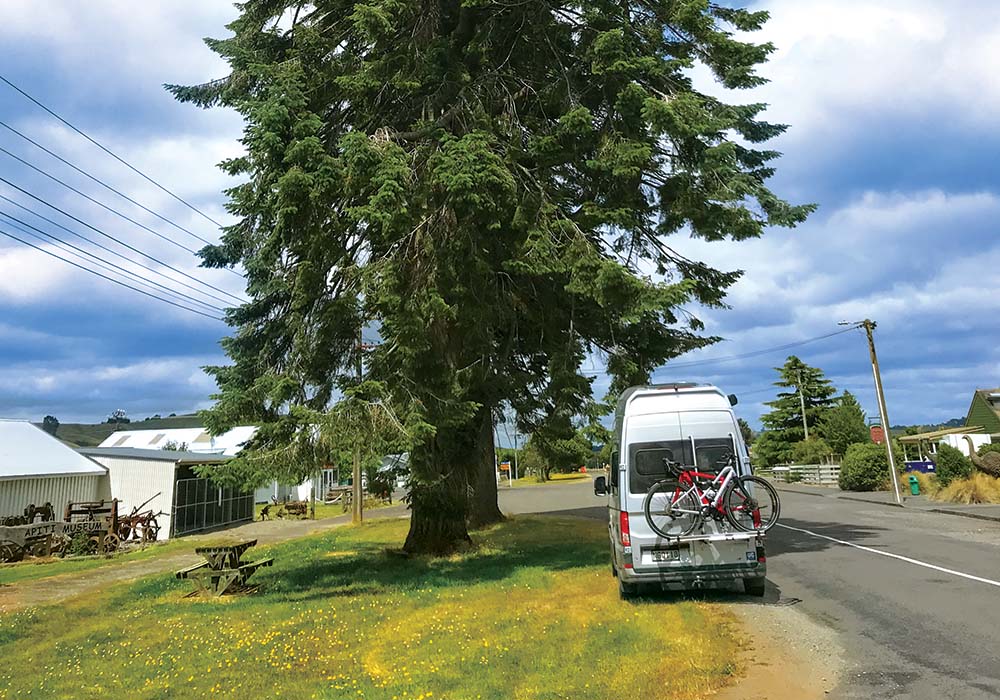
Cosy cabin
There isn’t the camping space of our old six-berth, but the height of the 600’s roof, the long sliding side door that’s usually left open when camping in daylight, and the light white/grey interior all serve to keep ‘cabin fever’ at bay. The real test will be camping with a couple of grandkids in tow during inclement weather; that’s fortunately a bridge we’ve yet to cross. The whole journey from Tuateawa with overnight stopping points at Coroglen, Okaiua Springs, the lovely Awastone camp near Mangaweka, and on to Wellington was completed in mostly dry weather. At each of these, the 600 attracted quite a bit of interest, and none of those who came for a closer look called the seating area a ‘Wendy’s booth’ or similar. Perhaps they were being polite.
You do have to compromise when choosing a smaller motorhome. For example, there’s no room for a large frying pan in the 600’s kitchen, so it’s carried along with other things that we seldom
use often in a sealed box under the bed. Also stashed there are other boxes that I call ‘modules’ – there’s one for the cycling gear, and one with essential supplies to restock the drawers and cabinets of the wetroom and kitchen. The barbecue we used to carry in the six-berth to cook outside when required has been replaced by a far smaller and lighter camping stove.
There’s lots that we love about the 600’s interior though. The cupboards above the bed are more spacious than they first appear, although they do have a talent for ejecting stuff when you open them. Fortunately, the bed below makes for a soft landing. Although the three foam squabs of the primary bed look a little thin, they sit on sprung plastic cups and deliver sleeping comfort to rival a proper innerspring mattress overall.
So no, I don’t really miss the old six-berth, especially as I can quickly convert the Grand California interior to suit the load of the day. The middle section of the bed folds upright and can be quickly secured in that position with snap-locking straps. This allows the Grand California to perform van-like tasks with a significant proportion of the bedroom area. Long loads like surfboards can slide all the way into the wet room/kitchen floorspace, while tall items can also be accommodated. Volkswagen has made securing these loads easy by fitting airline-like adaptive attachment rails at the base of the two rows of inward facing cupboards under the bed.
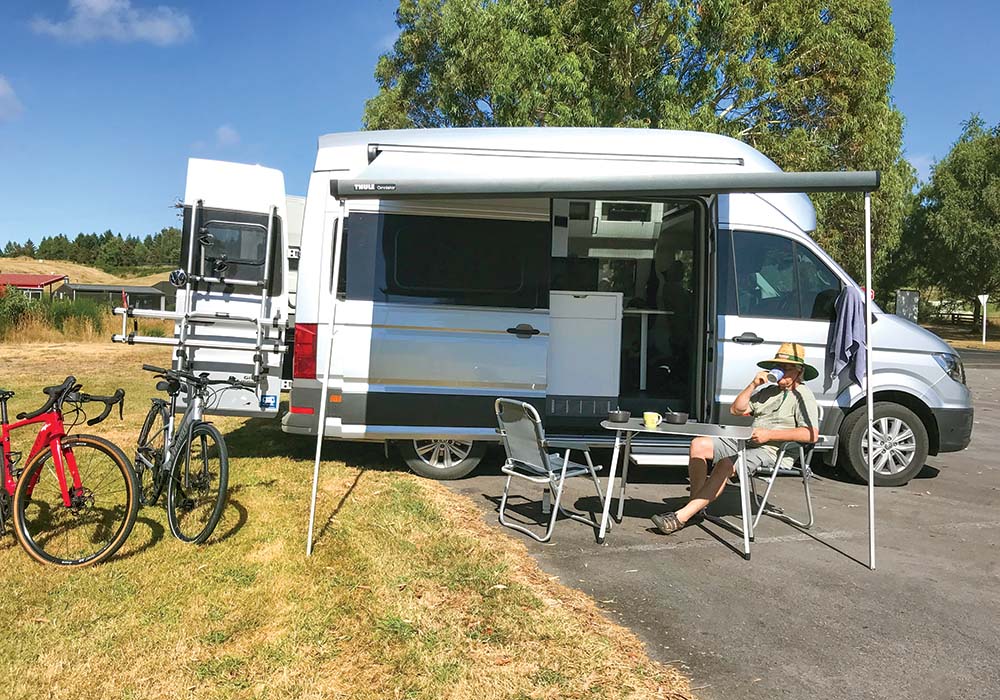
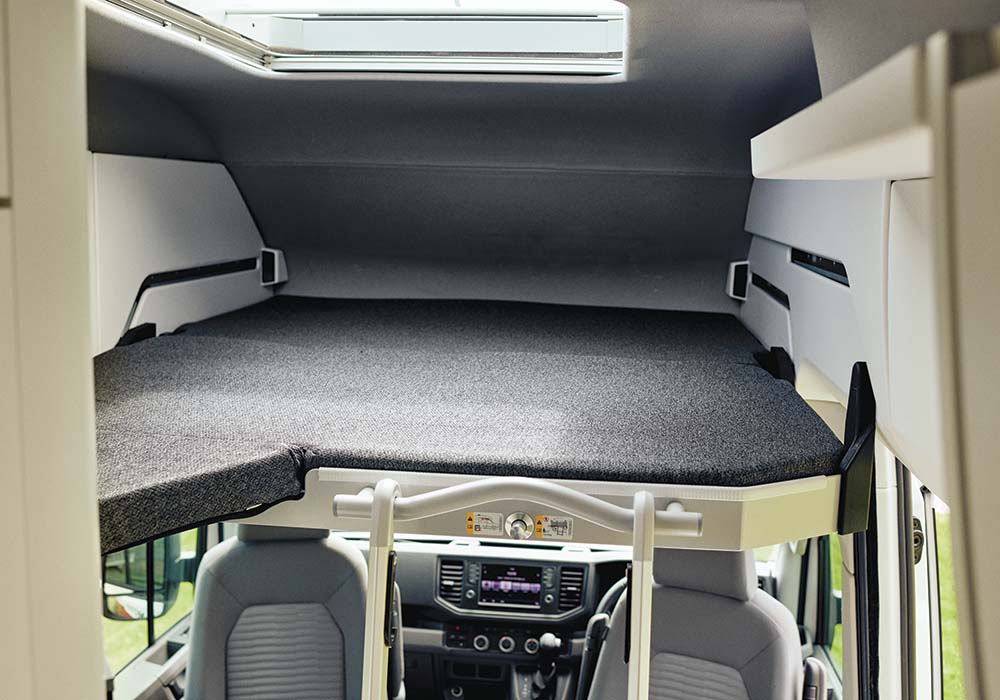
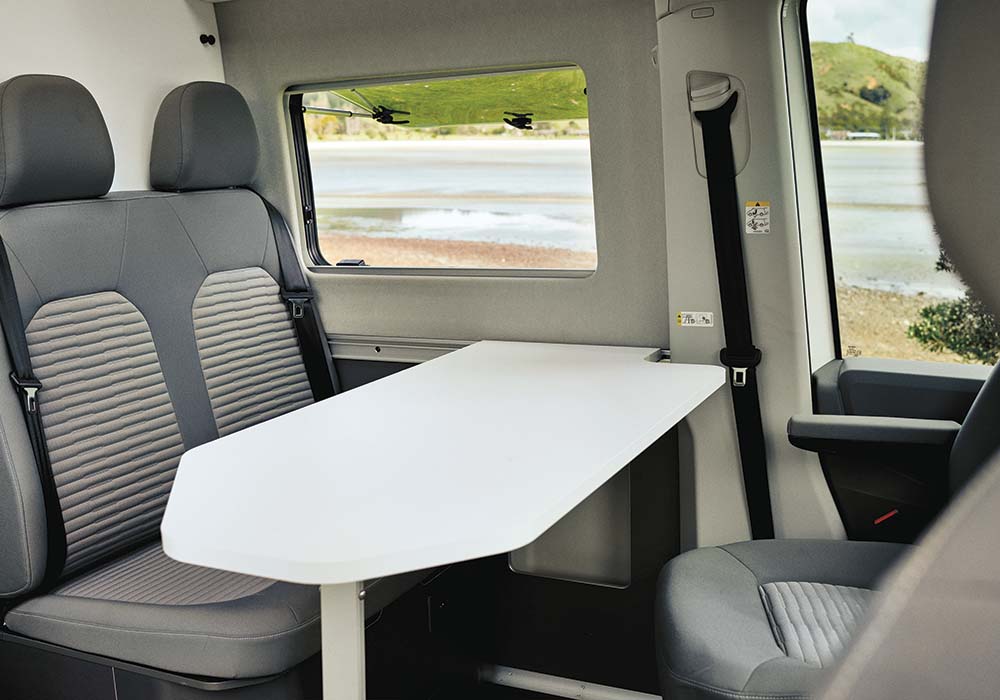
Ready for adventure
Lying in the comfortable bed, with the double rear doors open to present a panoramic view of somewhere scenic like Ruahine’s ‘Grand Circle’, is a highlight of touring in a Grand California. As is using the chemical-free toilet with the SOG ventilation system sucking away the fumes and ushering them through a charcoal filter before ejecting them, smell-free, outside.
What I like most about the Grand California 600 is that it takes a fresh approach to touring by motorhome. All the lessons Volkswagen learned with the successful California have given this fully self-contained variant a similar surf-and-sand vibe. The emphasis is on adventure rather than luxury, yet all your needs are taken care of. That’s readily apparent when you’re travelling from one end of the North Island to another, as we did for our first tour. You begin to seek out more adventurous places to visit, like the northern Manawatū cycling route, which begins in the rugged earthquake-ravaged hills of the mighty Rangitikei River catchment and ends amongst the ancient totara forest of the Pohangina Valley. This is a motorhome that is tailor-made to tour the roads less travelled.
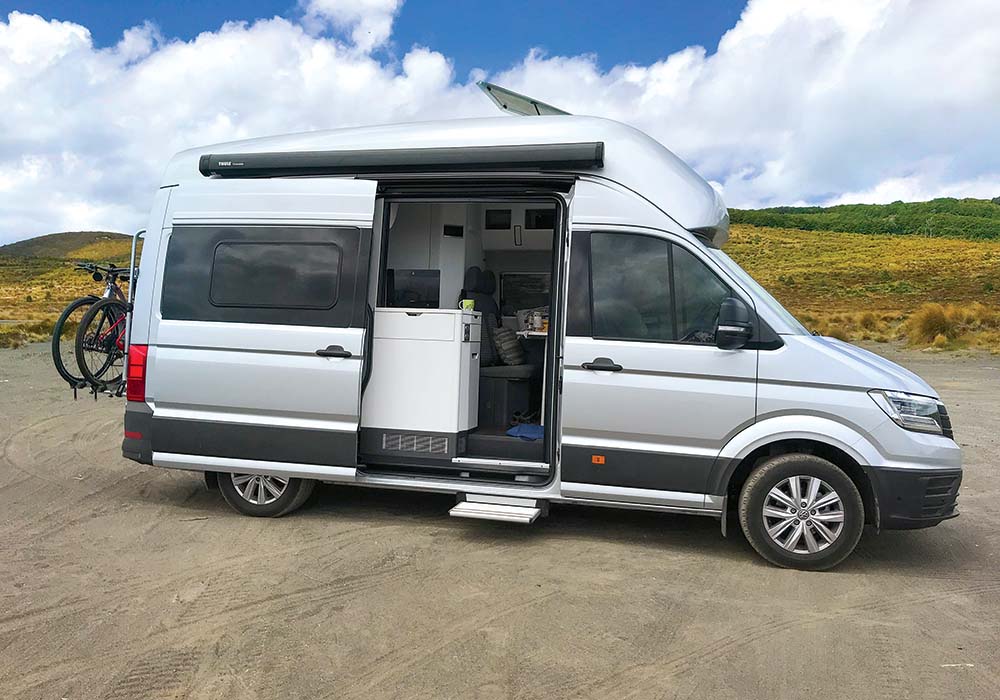
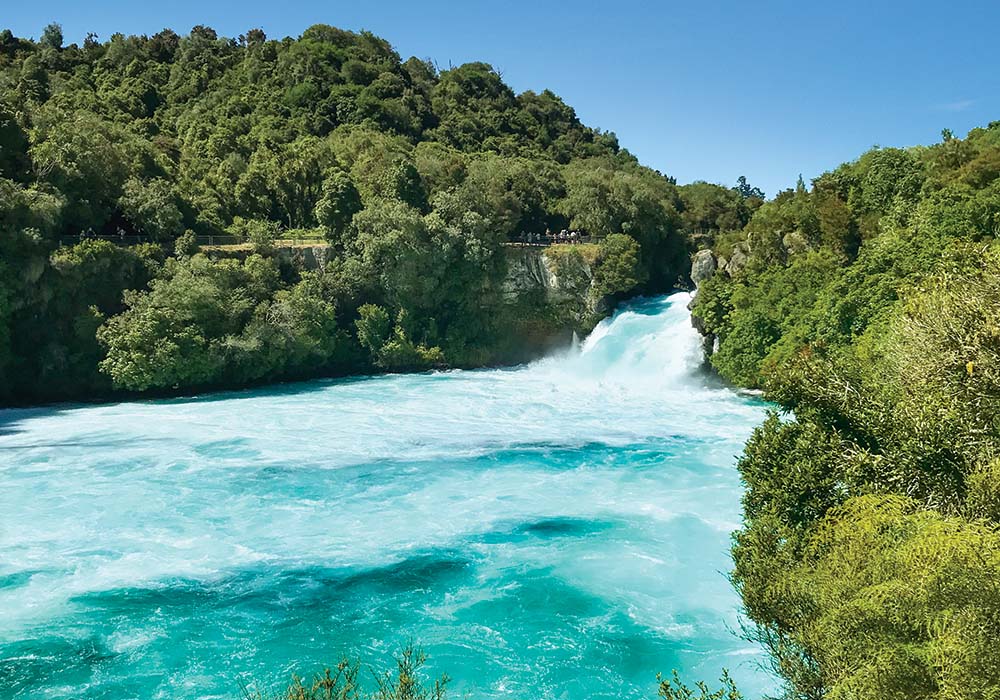
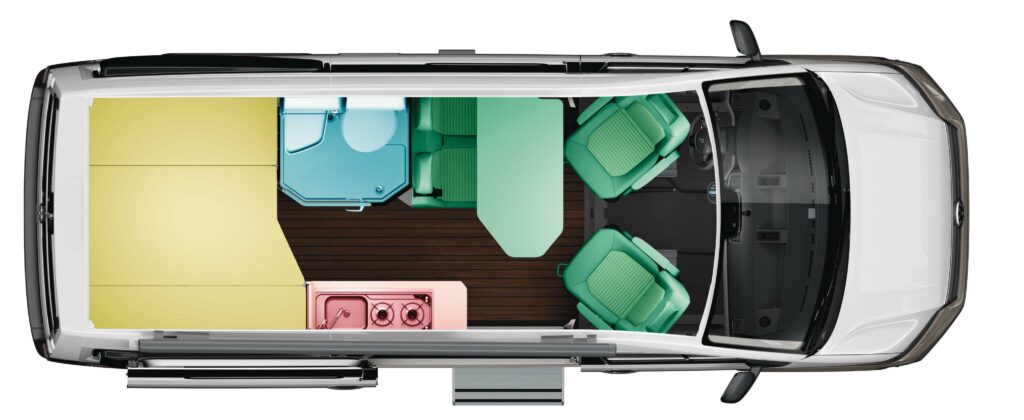
Volkswagen Grand California 600 Specifications
| Chassis |
VW Crafter MWB |
|
Engine |
2.0 l TDI (130kW, 410Nm) diesel |
|
Drivetrain |
4 MOTION AWD |
|
Gearbox |
8 speed automatic |
|
Berths |
4 |
|
Length |
6m |
|
Width |
2.04m |
|
Height |
2.97m |
|
Water tanks |
110L fresh / 90L waste |
|
Payload |
699kg |
Price: $169,900
For more information, visit volkswagen.co.nz


